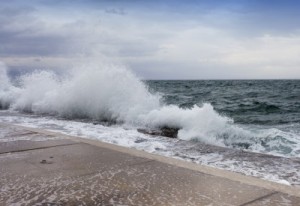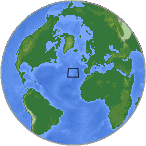
A small tsunami hit the US East Coast June 13, 2013
Few people noticed that on June 13, 2013, a small tsunami hit the East Coast of the US from Massachusetts to North Carolina to the Caribbean.
NOAA used 30 different tide-measuring gauges to pick up the tsunami tides that were 1 to 6 feet above normal along the coast – plus, they wanted to confirm that this was really happening.
Tsunami Or Storm Surge?
When you see a sudden 6 foot wave sweeping people off the beach, you know you have a problem. A tsunami is any unexpected series of destructive and fast-moving waves coming on shore, and this is what happened June 13.
NOAA doesn’t know for sure if the tsunami was caused by a shift in the continental crust at the bottom of the Atlantic Ocean, or if it was caused by a storm surge, even though no major storms occurred in the Atlantic at the time. They are definitely researching to see if the sea floor shifted in the Atlantic.
Earthquakes And Super Moon
Something else no one is paying much attention to is the fact that the Atlantic Ocean IS experiencing an increase in earthquakes, and a few days after this small tsunami, a 6.6 magnitude quake hit on the Mid-Atlantic Ridge (later downgraded to a 6.4 magnitude). So, the bottom of the Atlantic is active and it is shifting.
And don’t forget that the Super Moon is still influencing the Earth, but it peaked the same week as the tsunami and the Atlantic 6.6 quake. Three more large quakes occurred at the equator during this once-a-year full-moon event, with the largest quake in the Atlantic Ocean.
Increase In Global EQS And Tsunamis

Earthquakes in the Atlantic Ocean can send tsunami waves onto the east coast of the US and into the Caribbean.
Any and all coastlines are susceptible to tsunami waves, and as the Earth’s axis continues to sway and vibrate, don’t be surprised to hear of more tsunamis occurring.
Tsunamis are normally generated by offshore earthquakes, sub-marine landslides, and undersea volcanic activity. One of the largest tsunami threats to America’s east coast is likely to begin on the Canary Islands off the coast of North Africa.
Both volcanoes and sub-marine landslides are occurring here, and this can cause a wall of water to race across the Atlantic Ocean at the speed of a jet airliner, which can devastate the east coast and the Caribbean.
My guess is more small tsunamis will be hitting the US in the days to come because as the Atlantic sea floor moves, shakes, and uplifts, the water has to go somewhere.
